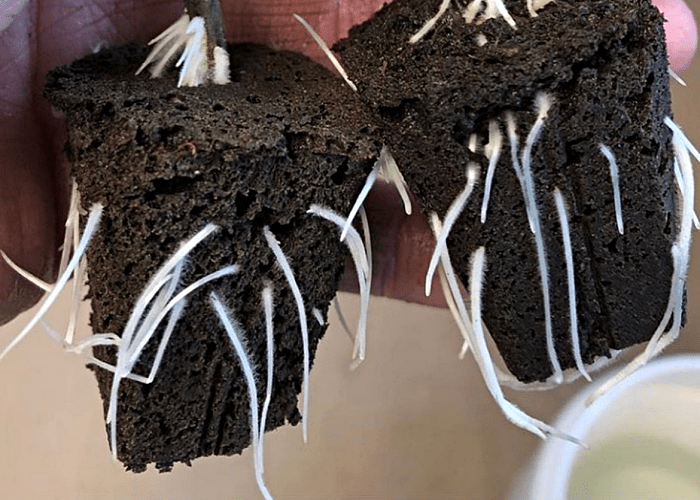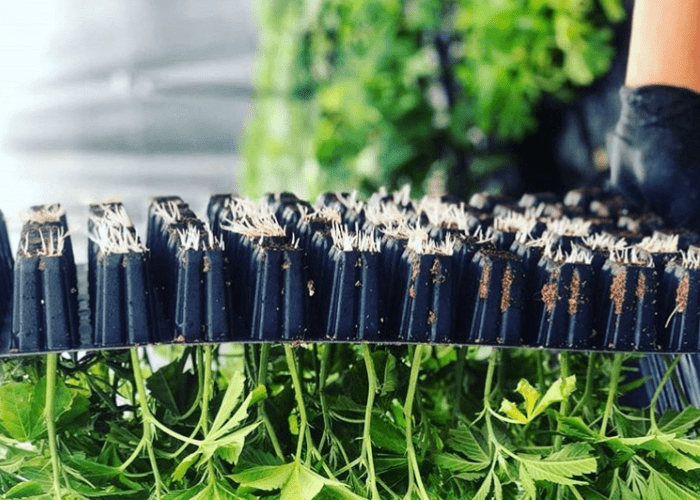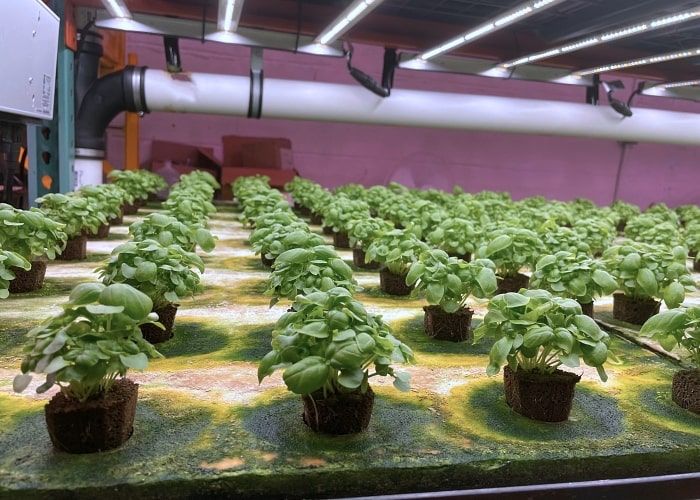In the sophisticated world of plants, the importance of a strong, healthy root system cannot be overstated. While the vibrant colors and lush foliage above the soil capture our attention, a plant’s true foundation for success lies beneath the surface.
The intricate network of roots serves as a lifeline for the plant, facilitating the absorption of water and essential nutrients, providing stability against the forces of nature, and serving as a hub for communications and interactions with the soil microbiome.
Let’s dig deeper and go beneath the surface to discover why a strong foundation is the key to plants’ overall health and well-being.
Water and Nutrient Absorption
Almost all of the water and essential nutrients needed by plants are absorbed from the soil by the roots. As a plant grows, it develops a dense network of roots with thousands of root hairs. These root hairs create a large absorbent surface area where nutrients and water are absorbed.
The root system essentially acts as a conduit for transporting these substances to other parts of the plant, supporting various physiological processes such as photosynthesis, growth, and reproduction.
Nutrient Storage
Not only do roots take in nutrients from the soil, but they also serve as critical storage organs for these essential components, along with high-energy carbohydrates and proteins. During periods of surplus, plants store their products in their roots, and during times of need or stress, they can draw upon these reserves.
Gas Exchange
While leaf stomata are typically associated with gas exchange in plants, roots are another important exchange site. They take in oxygen from the soil pores, the space between soil particles where air and water are found, and release carbon dioxide. This soil respiration is a critical part of carbon flux in the global carbon cycle, moving carbon from the soil into the atmosphere.
Impurities Filtration
In a process known as rhizofiltration, roots take in contaminants from the soil solution within the root zone. The roots then act as filters, trapping the heavy metals or other potentially damaging compounds and storing them in root biomass. By filtering and storing these contaminants, the root system minimizes toxic concentrations within the leaf and stem tissue, preventing cellular damage and plant growth retardation.
Anchorage and Support
Roots anchor the plant in the soil, providing stability and preventing it from being easily uprooted by wind, rain, or other environmental factors. This anchorage is especially important for tall and large plants.
Interaction with Soil Microorganisms
Roots create a microenvironment around themselves known as the rhizosphere. Within the rhizosphere, various beneficial microorganisms, such as mycorrhizal fungi and nitrogen-fixing bacteria, can interact with the plant. Through these interactions, the microorganisms contribute to nutrient uptake and can help enhance the plant’s overall health.
Environmental Adaptation
A robust root system also allows plants to adapt to their environment, especially when facing abiotic or biotic stressors. For example, in times of drought, plants with deeper, extensive root systems can explore a larger soil volume to find water sources and alleviate moisture stress.
Communication and Signaling
Lastly, roots play a crucial role in plant signaling and communication. They can release chemicals into the rhizosphere through root exudates; these chemicals act as signals that attract or repel other organisms in the soil. The released root exudates are critical in mediating plant–rhizomicrobiome and plant–plant interactions, including regulating physiological/biochemical aspects of beneficial soil microorganisms to enhance plant growth and resilience.
How Does an IHORT Plug Encourage a Good Root System?
One of the keys to promoting strong root growth in plants is having a well-draining soil with good water retention. While that sounds counterintuitive, plants need adequate water but not too much. Waterlogged soils can impede root development, too little water causes drought stress plants and also negatively impacts root development.
Our innovative bonded media and special Agriphillic Soil Handling™ process ensure each grow plug provides crucial, consistent moisture to the root zone and adequate drainage to prevent saturated, anaerobic conditions.
Going hand in hand with optimal moisture, good soil aeration is essential for oxygen uptake by roots. Compacted soils restrict air movement and can lead to poor root growth. Q Plug and Excel Plug are designed to maintain their shape from propagation to harvest, providing more air porosity than any other product available.
Since our bonded media doesn’t compress, every plug provides ample space for roots to grow and expand, while maintaining pore space for water and air.
Air pruning also helps develop healthy, fibrous, non-circling, non-girdling root systems. IHORT plugs naturally expose the root rips to air without high humidity. This natural process causes the root tips to prune themselves by drying and falling off. In turn, the plant constantly produces healthy, new, branching roots and generates massive root hairs.
Our Promise to You
IHORT believes every grower should have access to the best products and services, regardless of the scope or size of their growing operation. We are committed to offering innovative products, expert advice, and unparalleled customer service.
Whether you use the Q Plug or Excel Plug for your growing needs, you can rest assured knowing you’re giving your plants an optimal environment for robust and healthy root growth.
We’re here to help you grow. Contact us today to learn how our products can help you reach your highest growing potential.



